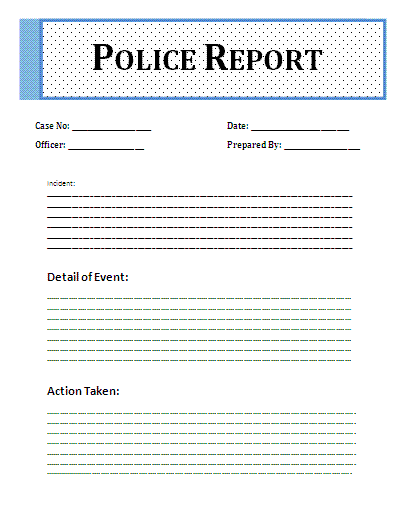Bond type NA is a designation given by the court regarding a case for some reasons. In this overview, we would discuss the meaning and significance of Bind Type NA.
What is Bond Type NA?
In the context of jail, “Bond Type NA” stands for “Bond Type Not Applicable.” This designation indicates that a specific type of bond or bail is not applicable to the individual or case in question. When someone is arrested and taken into custody, a bond is often set by the court to secure their release before their trial. This bond serves as a financial guarantee that the individual will appear in court for their scheduled hearings. However, in some cases, the option of posting bond is not applicable due to various circumstances.
Implications of Bond Type NA in Jail
1. Severity of Offense: One of the primary reasons for designating “Bond Type NA” is the severity of the offense committed. In cases involving serious crimes, such as violent felonies or repeat offenses, the court may deem it inappropriate to allow the defendant to post bond due to concerns about public safety.
2. Flight Risk: If the court believes that the individual poses a significant flight risk—meaning they might attempt to flee the jurisdiction to avoid facing trial—bond might be deemed not applicable. This often applies to individuals with extensive criminal records, no local ties, or foreign citizenship.
3. Prior Violations: Individuals who have previously violated the terms of bond or probation, or who have a history of failing to appear in court, may also have “Bond Type NA” assigned. This is to prevent repeat occurrences and ensure that the defendant remains in custody until their trial.
4. Threat to Society: If the court believes that releasing the defendant on bond would pose a threat to the community, bond might be deemed not applicable. This could be due to concerns about potential harm to witnesses, victims, or others.
5. Pending Charges: In situations where the defendant already has pending charges or cases in other jurisdictions, the court might determine that “Bond Type NA” is appropriate to ensure that they face all charges across different courts.
In essence, “Bond Type NA” signifies that the court has evaluated the circumstances of the case and determined that allowing the individual to post bond would not be in the best interest of justice, public safety, or ensuring their presence at trial. It’s a decision made on a case-by-case basis, taking into account factors like the nature of the offense, the defendant’s criminal history, their ties to the community, and their potential flight risk.
In conclusion, “Bond Type NA” in the context of jail indicates that the option of posting bond is not applicable due to reasons related to the severity of the offense, the individual’s history, potential threats to the community, or their likelihood of fleeing. This designation is a crucial aspect of the legal system that aims to balance the rights of the accused with the safety of society and the successful administration of justice.
RELATED:
Meaning of TBUT or DISP Auto/ Shoplifting / Firearm / All others and FAQs
Who Can Sign Off On Community Service Hours?
Hold For Another Agency: Meaning, Purpose and Significance
Frequently Asked Questions
FAQ 1: What factors does the court consider when designating “Bond Type NA”?
The court takes several factors into account when designating “Bond Type NA.” These factors may include the seriousness of the offense, the defendant’s criminal history, their ties to the community, the potential flight risk, the safety of the community, and any pending charges or cases in other jurisdictions. The goal is to make an informed decision that ensures the defendant’s presence at trial and doesn’t compromise public safety.
FAQ 2: Can “Bond Type NA” be appealed or modified?
Yes, the designation of “Bond Type NA” can be subject to appeal or modification. Defendants or their legal representatives can request a hearing to present new evidence or arguments that could lead the court to reconsider its decision. If circumstances change, such as new information coming to light or a shift in the defendant’s situation, the court may choose to modify the bond type from “NA” to a specific amount, or even to grant release on bond.
FAQ 3: Does “Bond Type NA” mean the defendant will stay in custody until trial?
Yes, in most cases where “Bond Type NA” is assigned, the defendant will remain in custody until their trial concludes. This designation indicates that the court has determined that the risks associated with releasing the defendant on bond outweigh the benefits. However, it’s important to note that every case is unique, and the court’s decision is influenced by the specific circumstances of the case.
FAQ 4: Are there alternatives to posting bond for defendants with “Bond Type NA”?
Yes, there are alternative options available for defendants with “Bond Type NA.” One such option is “release on recognizance” (ROR), where the defendant is released without having to pay bail but is required to promise to appear in court for all scheduled hearings. Additionally, some jurisdictions may have pretrial services programs that offer supervision and support to defendants while they await trial. These alternatives aim to strike a balance between ensuring the defendant’s presence in court and minimizing the impact on their freedom.
FAQ 5: Can “Bond Type NA” be changed to a different bond type before trial?
Yes, “Bond Type NA” can potentially be changed to a different bond type before trial. If circumstances change or new information comes to light that could influence the court’s decision, the defendant’s legal representation can request a bond hearing to present their case for a different bond type. The court will assess the new evidence and arguments before deciding whether to modify the bond designation.
In summary, the designation of “Bond Type NA” indicates that the option of posting bond is not applicable due to factors such as the severity of the offense, flight risk, prior violations, threat to society, and pending charges. Defendants and their legal representatives have the ability to appeal or request modifications to this designation based on changing circumstances. The court’s decision is rooted in a thorough evaluation of the case’s unique elements and the overarching goal of ensuring justice and community safety.
Last updated on: April 26, 2024




